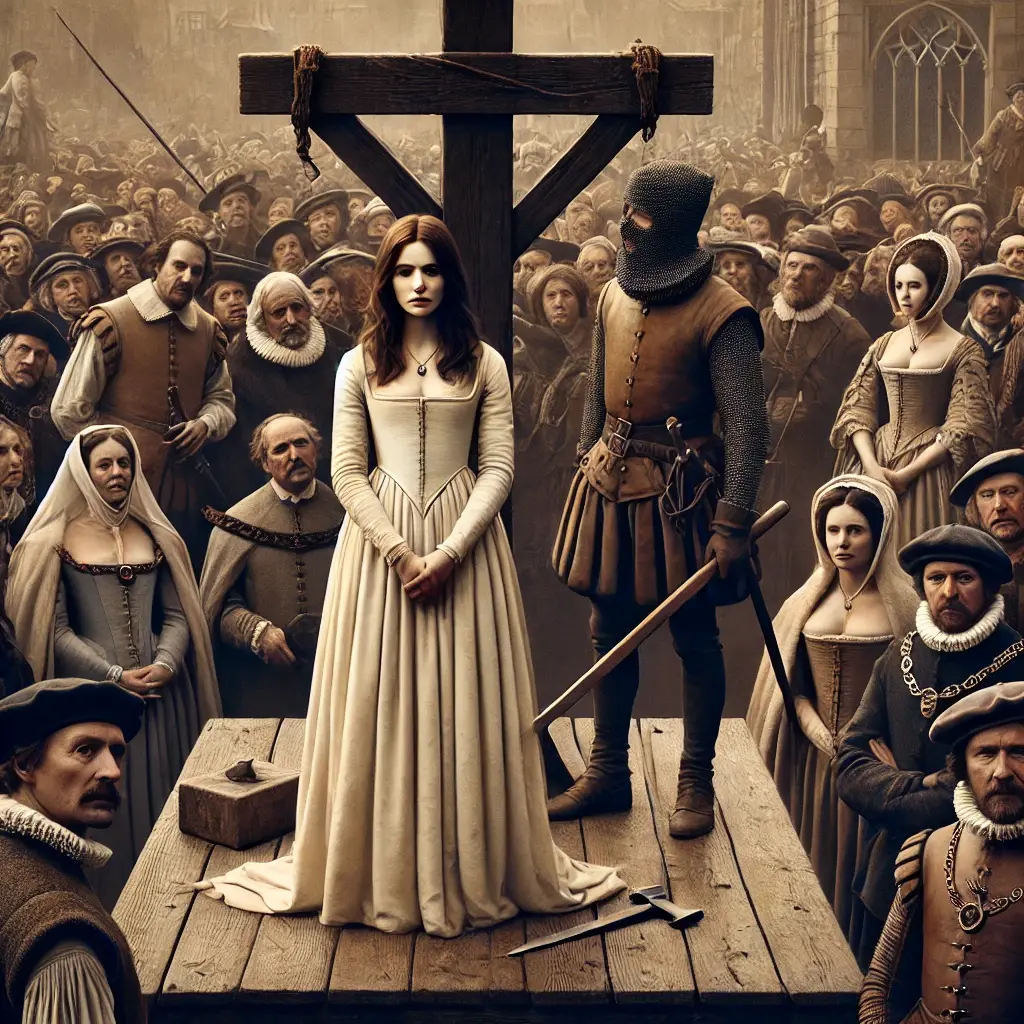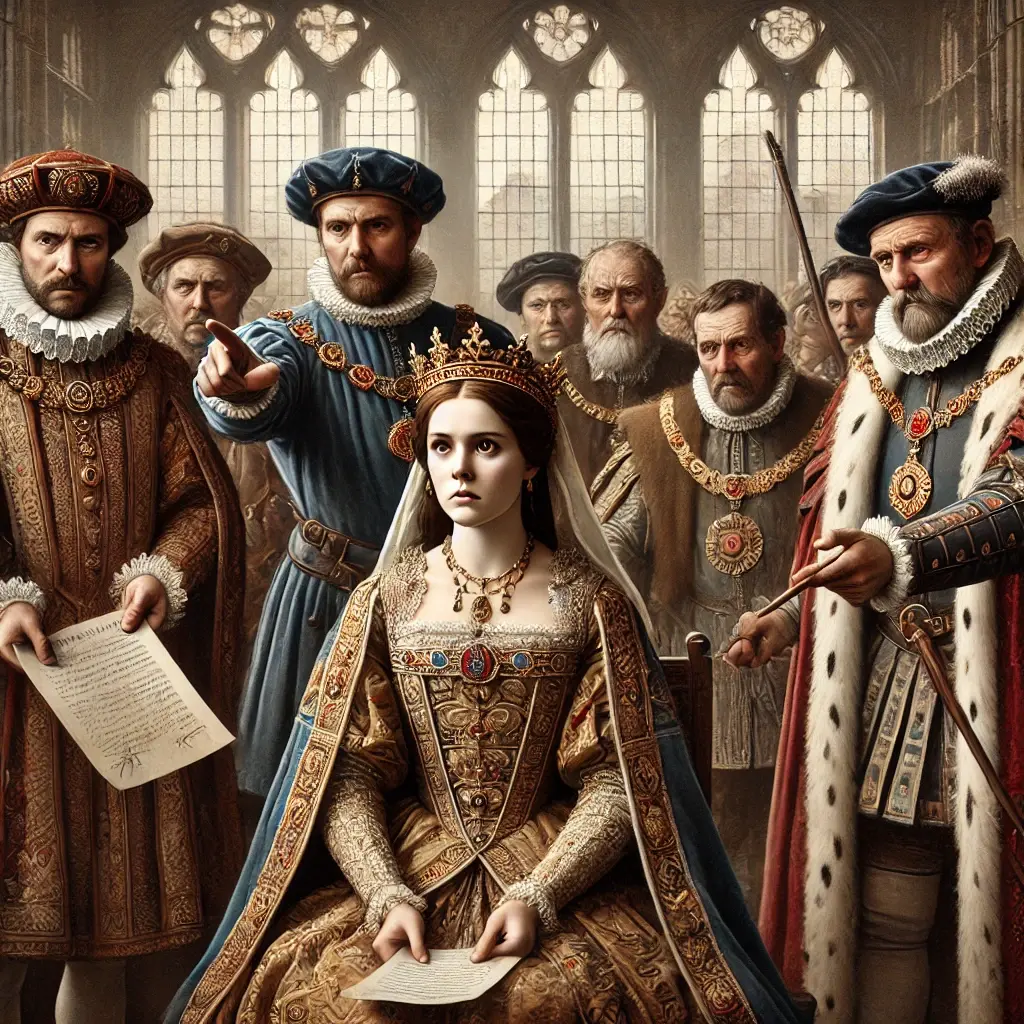On July 24, 1567, Mary, Queen of Scots, was forced to abdicate the throne in favor of her one-year-old son, James VI of Scotland (later James I of England). Mary’s reign was marred by political turmoil, controversial marriages, and the murder of her second husband, which led to her imprisonment and eventual execution. Her deposition marked a significant turning point in Scottish history, paving the way for the eventual union of the Scottish and English crowns under her son.
Mary, Queen of Scots, was a figure whose life was marked by dramatic highs and lows, her reign a focal point of intense political and religious strife. Born in 1542, she became queen when she was just six days old, following the death of her father, James V of Scotland. Her early years were spent in France, where she was betrothed to Francis, the Dauphin of France, and raised in the Catholic faith.

Mary’s marriage to Francis II of France briefly united the crowns of Scotland and France, but his untimely death in 1560 left her a widow at 18. Returning to Scotland in 1561, Mary faced a volatile political landscape. Scotland was in the throes of the Protestant Reformation, and her Catholicism made her a target for Protestant nobles who saw her as a threat to their newly established religious order.
Mary’s second marriage to Henry Stuart, Lord Darnley, in 1565 was initially a political alliance meant to strengthen her claim to the English throne. However, the union quickly turned sour. Darnley, though a great-grandson of Henry VII of England and thus a strong contender for the throne, was immature, violent, and increasingly resentful of Mary’s authority. The marriage became embroiled in scandal, exacerbated by Darnley’s jealousy of Mary’s Italian secretary, David Rizzio, who was brutally murdered in Mary’s presence in 1566.
The murder of Darnley in 1567, just a year after Rizzio’s assassination, marked a turning point in Mary’s fortunes. Darnley’s death, in an explosion at Kirk o’ Field, and the subsequent strangling led to widespread rumors and speculation about Mary’s involvement. Her marriage three months later to James Hepburn, Earl of Bothwell, who was widely suspected of orchestrating Darnley’s murder, only fueled the controversy and further alienated her from the Scottish nobility.
Mary’s political position became untenable. Noble factions rose against her, culminating in her forced abdication on July 24, 1567. Imprisoned in Loch Leven Castle, she was compelled to sign documents relinquishing the throne to her infant son, James VI. This moment marked the beginning of a new era in Scottish history, as James was raised under Protestant guardianship, ensuring the country’s continued religious transformation.
After her abdication, Mary made a daring escape from Loch Leven in 1568, attempting to regain her throne. However, her forces were defeated at the Battle of Langside, forcing her to flee to England, seeking protection from her cousin, Queen Elizabeth I. This decision proved fatal; Elizabeth saw Mary as a threat, a Catholic rival with a legitimate claim to the English throne.
Mary spent the next 19 years in various forms of captivity in England, becoming a focal point for Catholic plots against Elizabeth. Despite the conditions of her imprisonment, Mary remained a symbol of Catholic resistance and a potential figurehead for those seeking to depose Elizabeth. Her presence in England exacerbated the already tense religious and political climate of Elizabethan England.
The discovery of the Babington Plot in 1586, which aimed to assassinate Elizabeth and place Mary on the English throne, sealed Mary’s fate. Evidence of her involvement, albeit indirect, provided the pretext Elizabeth needed to remove the threat Mary posed. Mary was tried and found guilty of treason, leading to her execution at Fotheringhay Castle on February 8, 1587.
Mary’s execution was a significant and controversial act, fraught with political implications. It eliminated a rival to Elizabeth but also martyred Mary in the eyes of many Catholics. The execution further strained relations between England and Catholic powers in Europe, particularly Spain, which soon launched the Spanish Armada against England in 1588.
Despite her turbulent life and tragic end, Mary left an enduring legacy. Her son, James VI of Scotland, succeeded Elizabeth I in 1603, becoming James I of England and uniting the crowns of Scotland and England. This dynastic union laid the foundation for the eventual creation of the United Kingdom, a monumental shift in British history.
Mary’s story has fascinated historians, writers, and the public for centuries. Her life, filled with romance, betrayal, and political intrigue, has inspired countless works of literature, drama, and film. She remains a complex figure, often depicted as both a tragic heroine and a politically naïve ruler, whose actions shaped the course of British history.
The political and religious tensions of Mary’s reign also underscore the broader conflicts of 16th-century Europe. Her struggles mirrored the continent-wide clashes between Protestantism and Catholicism, monarchy and nobility, which defined much of the era’s history. Mary’s life and death exemplify the perilous nature of rulership during this tumultuous period.

Mary’s legacy is also reflected in her descendants. The Stuart line, through her son James, continued to influence British history, with notable figures such as Charles I, whose reign led to the English Civil War, and James II, whose ousting in the Glorious Revolution established constitutional monarchy principles that still underpin the British political system today.
In Scotland, Mary’s memory has been preserved in numerous historical sites, including her birthplace, Linlithgow Palace, and her prison, Loch Leven Castle. These locations, along with cultural depictions, contribute to the ongoing fascination with her life and reign, making her one of Scotland’s most enduring historical figures.
